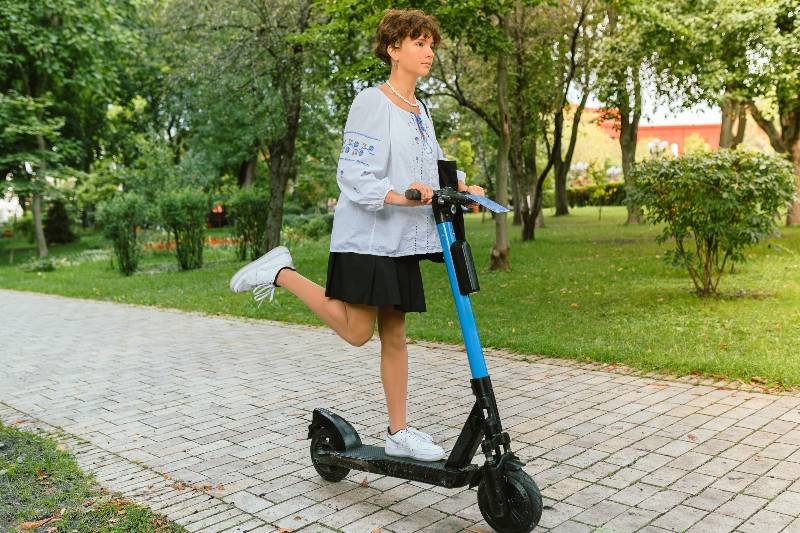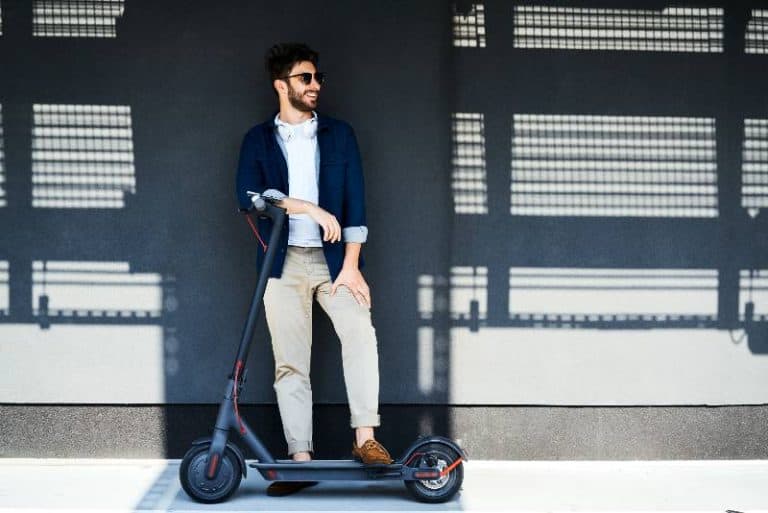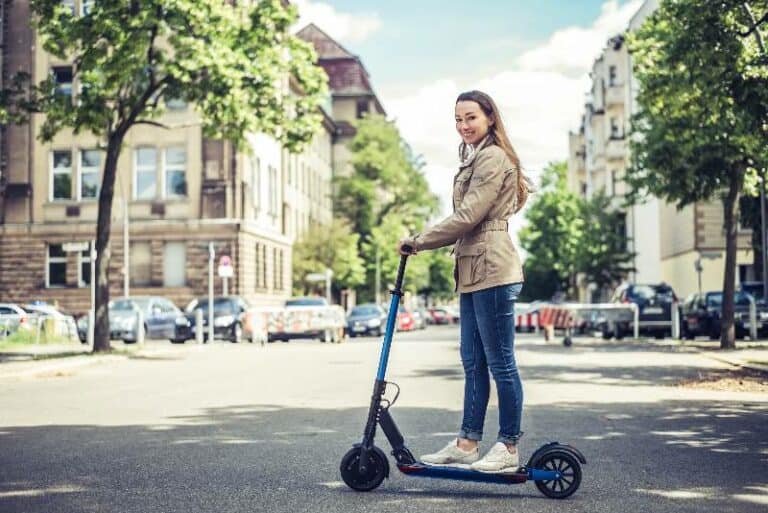The Rise Of Electric Scooters In The Sharing Economy
E-scooters have been on the rise in recent years, thanks in part to the sharing economy. Businesses like Bird and Lime have made it easier than ever for people to get around their cities without having to worry about traffic or parking. These shared micromobility options and e-scooter systems are a great way to reduce your carbon footprint and help the environment. In this blog post, we will discuss the rise of electric scooters in the sharing economy and how they are changing the way we travel!
Key Takeaways
- Electric scooters are on the rise in cities across the globe due to their convenience and environmental friendliness.
- Companies like Bird and Lime offer convenient, affordable rides that reduce traffic congestion and carbon emissions. Electric scooters are a great way to get around without having to worry about parking or traffic.
- According to research analysis, shared e-scooter systems provide an alternative to car-based transportation that is more affordable and can help reduce traffic congestion and carbon emissions.

The Sharing of e-scooters is a rapidly growing concept within the modern economic landscape. It focuses on peer-to-peer rental and sharing models that provide cost-effective access to goods and services. With the growth of this lifestyle comes the use of these scooters as a cost-effective mode of transportation.
These scooters are now showing up frequently in urban neighborhoods, college campuses, and tourist destinations; providing a convenient way to travel for those who would like to avoid driving or public transportation. The rise of these scooters in the sharing economy has been instrumental in delivering these efficient methods of travel all over the world, and it appears only poised to grow more popular.
History of Electric Scooters in the Sharing Economy
Early adopters and pioneers
In the year when the Titanic sank and traffic lights were yet to come, something else was born – scooters! The Autoped made its debut in New York City back in 1915 – a far cry from today’s high-tech e-scooter. After over 100 years of prohibition, delivery workers won an uphill battle this April and celebrated as NYC officially legalized these two-wheelers for everyday use. Talk about taking matters into your own hands; it looks like users are still one step ahead of legislators when it comes to rolling out revolutionary transportation modes along our streets!
Growth and expansion
For instance, In the 1940s, numerous different manufacturers began producing gas-powered scooters, which was a growing trend at the time. These scooters were quite popular, to the point where the United States military bought several different kinds of them. Even though these items did rather well in terms of sales, they were not at all popular consumer goods, and the average person didn’t even bother to purchase one of them.
The current state of the market
The electric scooter market has seen remarkable growth in recent years, with estimations that it will reach a whopping insight of USD 40.34 billion by 2030 – an impressive 8.1% CAGR increase since 2022! This signifies the increasing popularity of these innovative vehicles as part of our shared economy and points to exciting opportunities for future development and exploration within this growing industry.
How Electric Scooters in the Sharing Economy Work
Rental process
These scooters have revolutionized the sharing economy. If you’re looking to explore your city or find an alternative mode of transportation, electric scooter rental services make it easy to identify and convenient — all with a simple smartphone app. With just one download and a credit card for payment, users can get out on their wheels in no time.
Payment and pricing
The Sharing of e-scooters brings a new mode of transport to over 177 cities in the US and Europe – scooters! Rides value mostly at $1 to unlock plus 15 cents per minute, making them an affordable way to get around. Depending on the distance traveled, trips cost roughly double what bike sharing would charge.
Safety and regulations
These scooters that are operating are a valuable part of the sharing of e-scooters. To ensure that riders have safe and reliable experiences, fleet or industrial-grade vehicles should be purpose-built for heavy use, tested rigorously to pass improving safety traffic laws and regulations, properly maintained on an ongoing basis and any recalls promptly handled.
Advantages of Electric Scooters in the Sharing Economy
Convenience and accessibility
The Sharing of e-scooters has made life more convenient and accessible than ever before, with e-scooters playing an important role, especially in developing countries. These scooters have enabled people to move around city centers quickly, which can save time and money. They are environmentally friendly and require minimal charging power for their operation, significantly reducing a person’s carbon footprint.
Cost-effectiveness
These scooters are quickly becoming an innovative way for people to safely and sustainably get around town, due to their cost-effectiveness and convenience. With electric scooter rental services falling under the sharing economy model, city visitors and residents alike have access to a cheap form of shared transportation.
This cost-effective new form of transportation has brought great benefit to many cities across the world and looks likely to continue doing so in the future.
Environmental benefits
These scooters have become increasingly popular in the sharing economy, offering individuals a convenient way to get around town. One of the major advantages of these scooters is their decrease in greenhouse gas emissions compared to cars and even bicycles.
Challenges and Criticisms of Electric Scooters in the Sharing Economy
Safety concerns
However, they have also attracted plenty of criticism due to safety concerns. Riders of scooters must navigate diverse terrain and complex city infrastructure, as well as potential hazards such as potholes and bumps.
Littering and vandalism
Unfortunately, issues including littering and vandalism have become increasingly common as scooters enter more metropolitan areas.
Regulatory challenges
Governments and local governments must decide on how to regulate the use of these vehicles to ensure public safety and prevent misuse of them.
For example, some cities have imposed speed limits on scooters and restricted their operation to certain areas or sidewalks. Additionally, local governments may decide to place limits on the number of scooters that can be deployed in a certain area or require companies to obtain permits before deploying them.
Future of Electric Scooters in the Sharing Economy
Advancements in technology
As we transition towards a greener future, the sharing economy has embraced scooters as an affordable and convenient form of transportation. Battery manufacturers have been at the forefront of this revolution by creating various high-capacity batteries which have drastically reduced their cost, making these vehicles much more competitive with traditional options.
With battery technology constantly improving and prices becoming increasingly lower, it’s no wonder that we are seeing rapid growth in electric scooter-sharing programs all over – they offer us access to reliable personal mobility while also providing unique opportunities, and job opportunities for companies alike.
Government regulations
Governments are introducing ever-changing regulations that must be followed if riders want to remain on public roads – from driving as far right as possible to riding two abreast at most. Additionally, some local ordinances require users to stay on designated paths or trails when gliding down streets. With these restrictions continually being updated it is no wonder why the electric scooter’s fate hangs in balance for now!
Impact on transportation and the environment
The sharing economy is transforming how people navigate their cities, and scooters are no exception! With notable companies such as Lime, Bird, and Spin offering rentals in many urban areas around the world plus a rising popularity of private ownership, they’re becoming an increasingly attractive choice for commuters.
These include reduced noise pollution and CO2 emissions compared to other forms of transport such as cars and buses, making them a great choice for those looking to lessen their impact while they get from point A to point B. It’s clear that scooters are already having a noticeable impact on the future of transportation in our cities — one that promises exciting possibilities for becoming cleaner and greener!
As electric scooter-sharing programs become increasingly popular, companies are collecting data on ridership and usage patterns to help them better understand customer needs. This information can be used to improve the service and make sure that it meets the demands of riders.
Electric Scooters In The Sharing Economy FAQs
Is it profitable to share scooters?
Yes, shared e-scooters and e-bikes alike are becoming increasingly popular in cities around the world, creating a growing demand for services that offer these vehicles to customers. With the right business model and careful management of resources, According to the data collected, it can be a highly profitable venture for companies offering shared scooter and e-bike rides.
What are the benefits of scootering?
Scootering is a great way to get around!
It’s a fun and easy way to get around, and it’s great exercise too. Scootering can help you get your heart rate up, burn calories, and improve your cardiovascular fitness. You’ll also be getting some fresh air and sunshine, which is always good for mental health.
What problems do electric scooters solve?
Scooters solve many of the problems associated with traditional forms of transportation. They are far more cost-effective than cars or public transport, and they provide a much faster way to get around town. Scooters also don’t contribute to air pollution as they emit no emissions. Additionally, these scooters require practically no maintenance, saving users time and money.
How do returning scooters make money?
Returning scooters to their designated spots make money for companies by providing revenue from usage fees, as well as increased demand due to the convenience of access. Additionally, returning scooters increases the lifespan of the vehicles, which decreases replacement costs and helps companies save money in that regard.
Is an electric scooter economical?
Yes, scooters are very economical. They are far cheaper to purchase than cars and require much less maintenance than traditional modes of transportation. Additionally, they can be charged at home using a standard plug socket and typically only cost a few cents per mile to run. As such, they offer an affordable way of getting around while also being eco-friendly.
Conclusion
It’s been interesting to see the development of scooters in the sharing economy over the years. What started out as a simple, convenient way to get around has evolved into a high-tech method of transportation that is becoming increasingly popular. As we continue to see more and more scooters popping up in cities around the world, it will be fascinating to see how they continue to evolve. If you’d like to stay up-to-date on all things e-scooter, be sure to sign up for our newsletter – we’ll send you the latest news and developments so you can be the first to know about what’s happening in this exciting industry.






